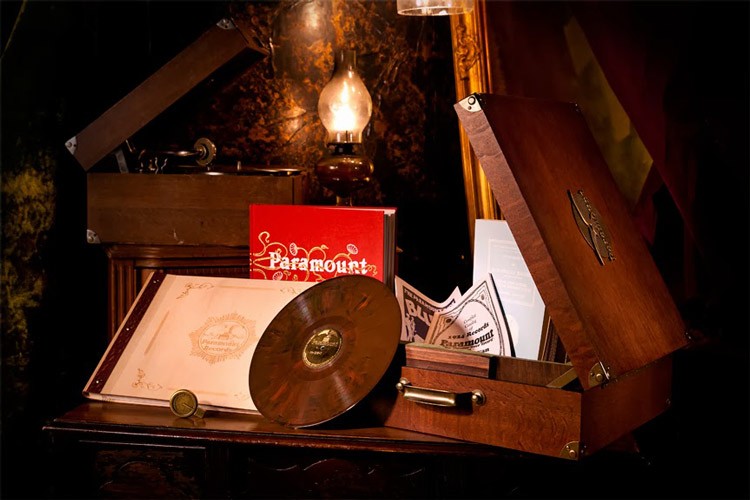Over a decade ago, I looked up from my computer screen at all the media I’d taken for granted as being somehow necessary. Books, magazines, CDs (or tapes or records), DVD (or VHS tapes or films) and newspapers had all been the default method for storing, transporting and retrieving quantities of static information. This was no longer the case, even if not every publisher had come to realize this fact. Text, video and audio could be accessed more easily and more affordably on the Web. Existing solely in electric form was now the default. Content would need a reason to justify existing in physical form.
Since then, a number of creators have risen to the challenge, creating unique experiences that can only be appreciated through physical contact with the object, like Chris Ware’s Building Stories, or T-Post Magazine, or our own Callithump!, a magazine created as a set objects distributed in toy capsule vending machines.
Jack White’s Third Man Records, in collaboration with Revenant Records, has gone above and beyond meeting the challenge with The Rise and Fall of Paramount Records, Volume 1. At first the $399 price tag seems steep, but when you look at what is included, and the quality of the design and craftsmanship, it is amazing they’re able to offer it for so little:
- 800 newly-remastered digital tracks, representing 172 artists
- 200+ fully-restored original 1920s ads and images
- 6x 180g vinyl LPs pressed on burled chestnut colored vinyl w/ hand-engraved, blind-embossed gold-leaf labels, housed in a laser-etched white birch LP folio
- 250 page deluxe large-format clothbound hardcover art book
- 360 page encyclopedia-style softcover field guide containing artist portraits and full Paramount discography
- Handcrafted quarter-sawn oak cabinet with lush sage velvet upholstery and custom-forged metal hardware
- First-of-its-kind music and image player app, allowing user mgmt of all tracks and ads, housed on custom-designed USB drive
They are taking some of the earliest commercially available recorded music and giving it new life and a new audience by rethinking the medium and its relevance as a physical object.
The whole package is a bold move on their part. Most “packaged” music falls in the “fetish object” category. The casual listener will be content with just a digital download, but true fans will pay the extra for physical objects because we feel more of a connection to the artists. It’s why vinyl is making a comeback while CD sales are declining, and why I’m willing to spend $53 for the Newspaper Edition of Radiohead’s King of Limbs when I won’t buy it on CD. But Paramount Records doesn’t have the huge fan base that contemporary artists can appeal to. Jack White could have made this box all about himself and it would have sold orders of magnitude more copies. Instead, he chose to create a thing of beauty as well as an archive of one of the most important labels in American music history and an important work of music scholarship.

